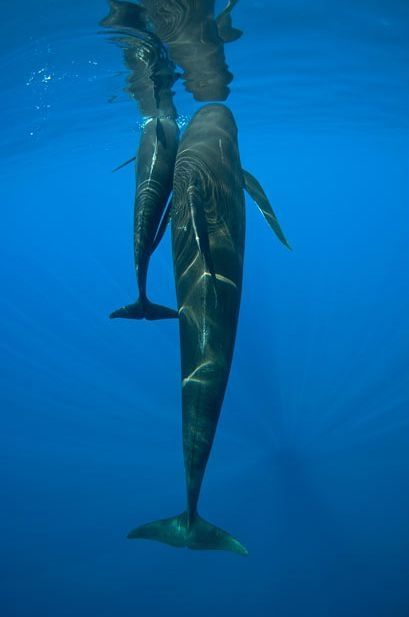|
|
Pilot Whale, Strait Of Gibraltar
|
The long-term survival prospects of both these species look good. Indeed in its Red List of Threatened Species the IUCN lists both the Long-finned and Short-finned as "Lower Risk; conservation dependent". The Long-finned Pilot Whale has traditionally been hunted by whalers by the process of "driving" – where many fishermen and boats gather in a semicircle behind a pod of whales, that has been sighted close to shore, and slowly drive them towards a bay. When close enough stones attached to lines from the boats are thrown into the water behind the whales, driving them towards the beach where they become stranded and are slaughtered. This practice was common in both the nineteenth and twentieth centuries. Currently only the Faroe Islands operates such a cull. Statistics have been kept for the drives in the Faroe Islands for centuries, and in the 1980s around 1,500 individuals were killed each year in this manner, declining in the 1990s to under a thousand. The Short-finned Pilot Whale has also been hunted for many centuries, particularly by Japanese whalers. In the mid-1980s the annual Japanese kill was about 2,300 animals. This had decreased to about 400 per year by the 1990s. Killing by harpoon is still relatively common in the Lesser Antilles and Sri Lanka. Due to poor record-keeping it is not known how many kills are made each year, and what effect this has on the local population. Both species are also collaterally caught and killed in longline and gill-nets each year.
The Strait of Gibraltar (Arabic: مضيق جبل طارق, Spanish: Estrecho de Gibraltar) is a narrow strait that connects the Atlantic Ocean to the Mediterranean Sea and separates Spain in Europe from Morocco in Africa. The name comes from Gibraltar, which in turn originates from the Arabic Jebel Tariq (meaning "Tariq's mountain"), albeit the Arab name for the Strait is Bab el-Zakat or "Gate of Charity". It is also erroneously known as the Straits of Gibraltar, or STROG (Strait Of Gibraltar), in naval use and as "Pillars of Hercules" (Greek: Ηράκλειες Στήλες) in the ancient world. Europe and Africa are separated by 7.7 nmi (14.3 km; 8.9 mi) of ocean at the strait's narrowest point. The Strait's depth ranges between 300 and 900 m (980 and 3,000 ft) which possibly interacted with the lower mean sea level of the last major glaciation 20,000 years before present when the level of the sea was believed to be 110–120 m (360–390 ft). Ferries cross between the two continents every day in as little as 35 minutes. The Spanish side of the Strait is protected under El Estrecho Natural Park.
|
|









